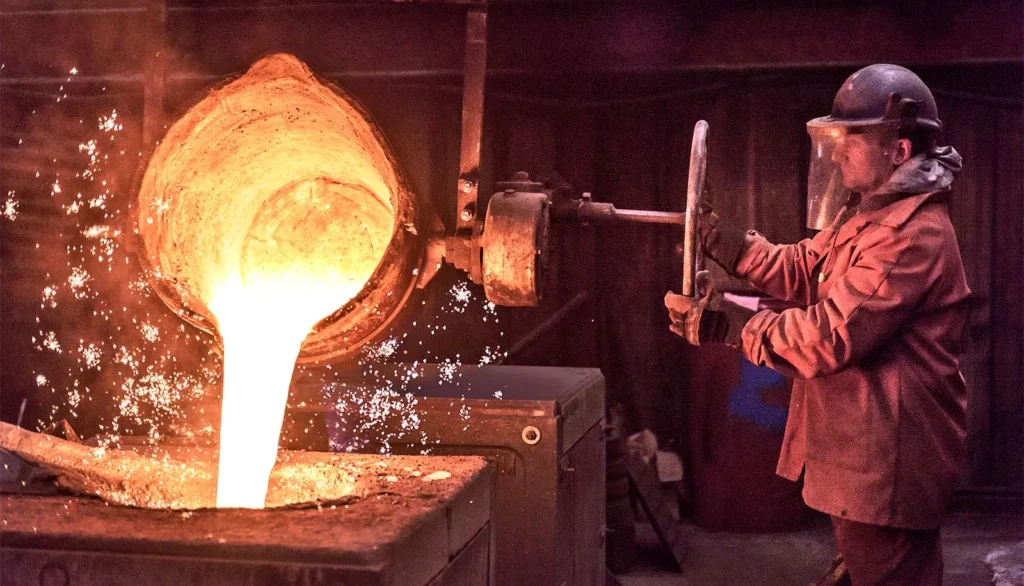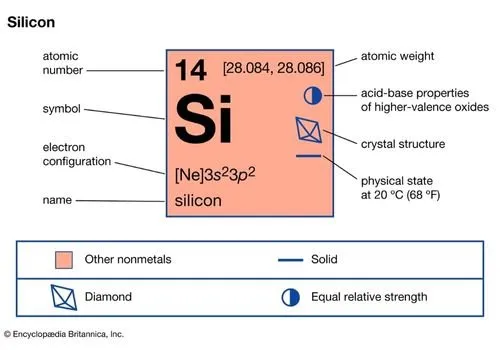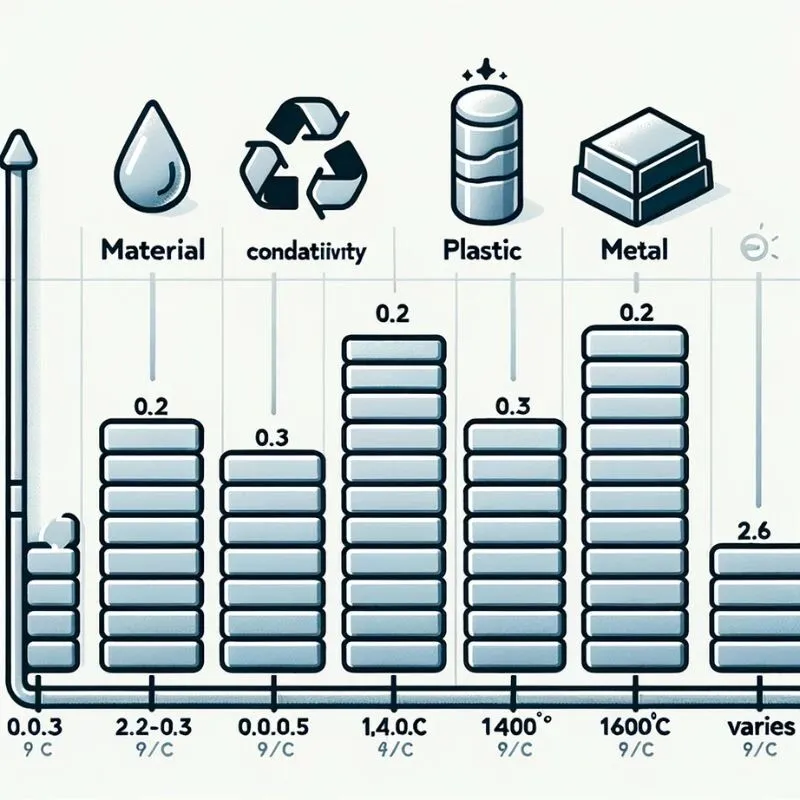Introduction
Silicone, a versatile material widely employed in industries such as automotive, food, electronics, and more, is celebrated for its exceptional thermal stability. In contrast to the melting point of silicone conventional plastics, silicone maintains its structural integrity even under high temperatures. This distinctive characteristic has significant practical implications, prompting engineers and professionals to delve into silicone’s thermal behaviour to meet the demands of modern applications. Understanding silicone’s melting temperature is paramount, unlocking its industrial potential.
What materials are used to make silicone?
It is critical to comprehend silicone’s composition and manufacturing process while talking about its temperature range.
The chemical element silicon is used to create the synthetic polymer silicon and serves as the basis for silicone rubber.
Silicon is most commonly found as silica, which is an oxide of silicon. While primarily derived from silicon, the silicone formulation also includes hydrogen, carbon and oxygen.
Silicon and silicon dioxide compound silica need to be separated in order to be made into silicone. They heat the quartz sand to 180 C in order to do this. After that, silicon and methyl chloride must be mixed and heated via a number of steps. Following distillation, it becomes polydimethylsiloxane, a polymerized siloxane that is ready for further polymerization.
Does Silicone Melt?
Well, silicone does not melt at high temperatures like other plastics do.
On the other hand, silicone rubber gradually loses its mechanical qualities and turns brittle over 200°C.
It would help if you thought about silicone vs. silicon in order to provide a more correct response to the question.
Observe the distinction.
Silicon is a primal element that occurs naturally. Conversely, silicone is a synthetic polymer composed of siloxane, which also includes oxygen and other components.
It is noteworthy that silicone is temperature-tolerant. It does not get melted. Rather, it stays solid but only until it catches fire.
In high temperatures, silicone, a synthetic polymer, lacks an exact melting point. It will, however, melt and burn when the temperature is appropriate.

How Hot Does Silicone Have to go Before Melting?
Synthetic polymers like silicone are frequently employed because of their strength, flexibility, and resistance to heat. It can tolerate unexpectedly high temperatures, typically up to 300°C before melting. However, silicone may begin to degrade at temperatures that persist over this threshold, losing its strength and material integrity. Silicone is so frequently the best option for applications that need heat resistance without compromising other features.
Factors Affecting Food Grade Silicone Melting Point
The following are some of the variables that can impact silicone’s melting temperature:
Type of silicone
- Purity of the silicone
- Presence of additives
- Heating time
First, it is critical to understand that silicone comes in various forms, each with a unique melting point. For instance, the melting point of polydimethylsiloxane is lower than that of polydimethylsiloxane-co-phenyl.
Thus, be mindful of the kind of silicone you employ for your project. For a job involving extremely high temperatures, for instance, silicone with a higher melting point might be required.
Second, the quality of the silicone you are using can affect its melting temperature. Impurities acting as nucleating agents can lower the melting point.
Another factor influencing the melting temperature is additives. For instance, plasticizers can lower the melting point, whereas fillers can raise it.
The silicone’s filler content may also have an impact on the melting point. The melting temperature decreases with the number of fillers present.
Additionally, silicone’s melting point may change depending on how long it is exposed to heat. The melting temperature of silicone will decrease with extended exposure to high heat as opposed to brief exposure.
What Is The Silicone’s Melting Point?

Thus, we already know about silicone’s complex composition and melting points. What is its precise melting point, then?
Because there is a wide variety of silicone goods available, silicone’s melting point usually falls within a large range. As a result, the melting points of silicone rubber and silicon dioxide, for example, are probably different.
For reference, however, the majority of specialists and metallurgists estimate that silicone’s melting point ranges from -60°C (-76°F) to 250°C (482°F). It is important to remember that this is the melting point range for silicone rubber. Do not necessarily take that to heart; if you look at various silicone varieties, you might notice differences in the exact figure.
Additionally, it would be beneficial if you remembered that not all silicone variations fall within this range. It is important to consider that different formulations may have different melting points.
The molecular structure of silicone polymer and intermolecular forces determine the melting point of silicone rubber. As is common knowledge, silicone material is a solid-state product at lower temperatures. This indicates that the polymer’s chains are densely packed and firmly held together by potent intermolecular forces.
Thermal energy strikes the silicone substance instantly upon a temperature jump. Its unifying forces are also practically put to the test. The heat energy built up becomes sufficient to break these intermolecular interactions as soon as the temperature reaches the precise melting point, creating an adequate opening for these polymer chains’ unrestricted motion.
The solid polymer finally turns liquid due to this continuous movement.
A noteworthy observation is that a faster rate of molecular mobility is also present when a substance transitions from a solid to a liquid, such as when it reaches the melting point of silicon bronze. The rigid structure will finally break completely as the polymer chains are able to glide past one another.
Lastly, remember that you can undo the entire melting process. Therefore, if the material melts when it reaches the silicon carbide melting point, it can always be cooled to solidify it again. When the temperature falls below the melting point, the material goes through a brief transition process to return to its solid state.
One of silicone’s most important qualities is its reversibility. You can shape and mould the material to your liking, and silicone may be reprocessed multiple times by simply melting it and utilizing its solidification properties.
As previously said, a thorough grasp of silicone’s melting and boiling points is useful for a variety of applications, including material casting, injection moulding, and much more. Precise temperature control is essential for these procedures. Additionally, the effectiveness of the entire process depends on understanding how to manipulate the properties of the material appropriately.
This knowledge is also crucial for choosing the appropriate silicone version for each unique functionality, particularly those that call for resilience to high temperatures.
Measure Silicone Rubber Melting Temperature Range
One method of determining silicone’s melting point is using a differential scanning calorimeter (DSC). This apparatus monitors the heat transfer that occurs as a substance heats up or cools down.
The DSC can ascertain the silicone’s melting point by monitoring the heat flow.
To determine the melting temperature, the material must first be heated to its melting point. Then, the temperature at which it starts to flow is measured.

This method is known as the differential scanning calorimetry method, from which the measuring device gets its name.
What temperatures can different grades of silicone withstand?
- General Purpose Silicones: General purpose silicones like silicone sealants and gaskets tend to have a high-temperature limit of around 200 C to 250 C and also lower temperatures of -50 C to -75 C. This makes silicone the perfect material for applications with extreme temperature requirements.
- Heat stabilised silicone: Heat stabilised silicones contain additives that increase their maximum operating temperature to 260°C.
- High-temperature silicone: High-temperature grades of silicone contain additives that make them suitable for applications up to 300°C for intermittent periods. If the part is to be exposed to continuous temperatures over 300°C then the silicone’s properties would degrade with time.
- Flame retardant silicone grades: Flame retardant grades can withstand intermittent temperatures up to 220°C (depending on the specific grade). These materials contain additives which enhance silicones’ self-extinguishing properties. A variety of flame-retardant grades are available specifically formulated to meet standards such as:
UL94-VO
EN45545-2
CS 25.85
Silicone Thermal Conductivity
The extraordinary property of silicone’s heat conductivity highlights its adaptability. For situations where temperature control is necessary, its capacity to function as a thermal insulator is essential. Silicone provides regulated thermal conductivity, which acts as a buffer against temperature swings, in contrast to metals, which conduct heat quickly.
This feature is especially helpful in electronic applications since silicone acts as a heat sink, shielding delicate components from heat-related damage. When we dive into the world of molecules, we find that silicone’s siloxane backbone is crucial to its thermal behaviour. It gives silicone stability and makes it an excellent material for controlling heat—a quality that is essential in many industrial applications.
How to Control Melting Temperature of Silicone
There are several techniques to regulate silicone’s melting point.
Using a different kind of silicone is one method. Certain silicones melt at a lower temperature than others.
The melting temperature can also be regulated by adding filler to the silicone. As a result, the melting point may drop by as much as 50 degrees.
Lastly, the cure temperature and cure duration are also adjustable. This can also lower the melting temperature and alter the silicone’s thermal conductivity.
Methods to Control Silicone’s Melting Temperature
- Material Composition: Adjusting the composition of silicone by adding or modifying components can impact its melting temperature. This method allows for customization to meet specific application requirements.
- Processing Techniques: Particular processing techniques during manufacturing can affect the thermal behaviour of silicone, including elements like temperature, pressure, and cure time.
- Thermal Stabilizers: Adding or coating thermal stabilizers to silicone can help regulate and improve its resilience to high temperatures. These stabilizers are essential for customizing silicone to meet certain temperature requirements.
- Innovation in Material Science: Ongoing research and development in material science continue to uncover new ways to control silicone’s melting temperature. Innovations in this field drive the adaptation of silicone for diverse and demanding thermal applications

By utilizing these methods, industries have the capability to not only resist heat but also harness silicone’s thermal properties to meet the precise demands of their applications, fostering innovation in the use of this remarkable material.
Melting Point Effects on Product Performance and Design
The silicone melting point can impact the material in a number of ways that affect both design and operational performance. Among them are a few of them:
Informing Design Considerations:
The engineering and design of silicone and its related products will be influenced by the silicone’s overall melting point. Silicone materials that are resistant to deterioration or melting should be used for designing goods that will be subjected to high temperatures.
Processing and Manufacturing:
The ideal manufacturing and processing techniques for silicone-based items will also depend on the silicone melting point.
For example, manufacturing a silicone material using techniques like extrusion and injection moulding should be relatively easy if the substance has a low melting point. The material can be heated above that melting point in order to be shaped into the required shape.
Conversely, a silicone material possessing a high melting point will require different processing techniques, such as compression and transfer moulding, to manage its complex characteristics.
Temperature Resistance:
Determining the boundary between silicon’s melting point and temperature resistance is a rather simple task.
A silicone substance with a high melting point is more resistant to heat and higher temperatures. These materials are typically suitable for use in engine components, heat-exposed seal applications, and similar settings.
The melting point of silicone will also determine the highest limit of the temperature range at which it may retain its mechanical and physical qualities.
Structural Stability:
The melting point of a material should be taken into account when assessing its structural stability. When silicone products are used above their melting point, distortion and maybe complete material failure can occur.
Rather, give greater thought to selecting a silicone material with the appropriate melting point. This will ensure that stability and shape are maintained in the long run
Is silicone safe to use?
Sure, using silicone is safe. Applications for silicone include electrical and medical. Experts claim silicone is secure and, most likely, not hazardous because of its chemical stability. Furthermore, the FDA states that food-grade silicone cookware does not contaminate food with dangerous chemicals.
Conclusion
Silicone is an essential component used in many industrial and manufacturing operations. Monitoring its melting point is crucial if you want to ensure its efficient use.
Forestsilcone offers the highest-grade silicone materials for your use. Please contact us if you require any advice regarding the melting point of any silicone substance.
Frequently Asked Questions
What affects does heat have on silicone?
Silicone is easily affected by heat in a number of ways, such as softening, losing its mechanical qualities, and crosslinking. As would be expected, these effects would vary depending on the nature of the material and the duration of exposure.
How can I determine whether a silicone substance is suitable for the purpose I have in mind?
It will be better to evaluate the silicone material in terms of heat and melting. It might not be your best option if its melting point is lower than the typical temperature you anticipate it will experience.